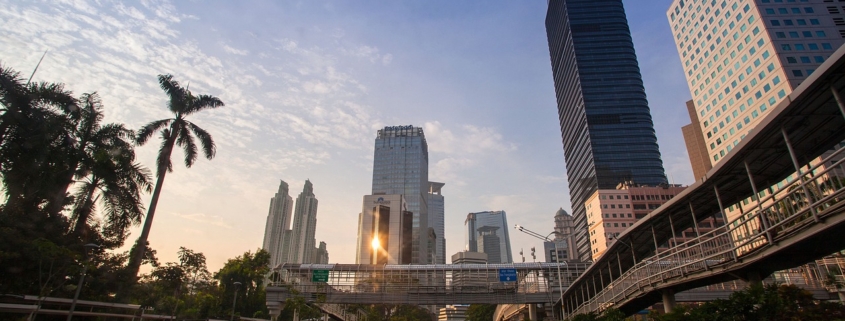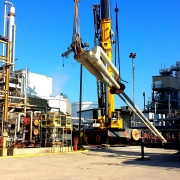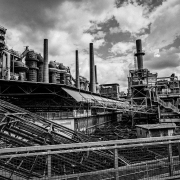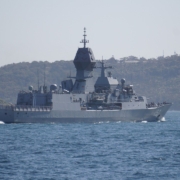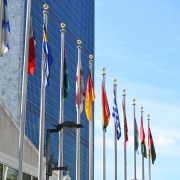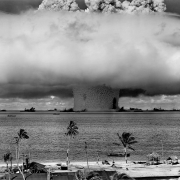How did the Guided Democracy affect the Indonesian Economy?
Topic of Study [For H2 History Students]:
Paper 2: Economic Development after Independence
Section B: Essay Writing
Theme II Chapter 1: Paths to Economic Development
Historical context: Power Struggle
On 21 February 1957, President Sukarno delivered a speech, which claimed that Western parliamentary democracy was the root cause of political crises in Indonesia. As such, he proposed a change to the political system that will unify the Indonesian people. This was termed the ‘Guided Democracy‘.
Declaring that Western concepts of parliamentary democracy in Indonesia had led to recurring crises, because of the weakness of government authority and the vehemence of political opposition, Sukarno suggested a system “in harmony with the soul of the Indonesian people”, a system in which “all members of the family sit at the table – at the eating table and at the working table”.
An excerpt taken from “‘Guided Democracy’ in Indonesia” by Justus M. Van Der Kroef, published in the Far Eastern Survey Vol. 26, No. 8 (August 1957).
A month later, the cabinet of Ali Sastroamidjojo fell apart. Subsequently, it was replaced by an extra-parliamentary party of experts handpicked by Sukarno. The President made thorough attempts to quell the regional rebellions and consolidate power, with Major General Nasution leading the charge. Over the next two years, the Indonesian Army defeated the rebellions in Sumatra and Sulawesi. The 1945 Constitution made a comeback in July 1959. In March 1960, Sukarno dismissed the members of parliament and appointed a new body to back his economic policies.
Progress or Regress?
Between 1957 and 1965, Gross Domestic Product (GDP) growth was comparatively lower than the period of 1950 to 1957, suggesting that the Guided Democracy had created more problems for the Indonesian economy. According to the Central Bureau of Statistics, the average annual growth of net national product was about 1.7% per annum. Given that population growth rate averaged 2% per annum, it meant there was declining per capita income.
One such observation can be made in the agricultural sector. The government made efforts to promote the use of new technologies to raise rice production, but to no avail. In 1959, a three-year rice production programme was launched.
Under this programme, fertiliser imports increased from 250,000 to 450,000 tons, but because of the succession of very poor rainfalls, especially in Java, in 1961, 1963, 1965 and 1967, rice output growth was disappointing. […]
Some authorities blamed the disappointing rice production performance, in spite of increased fertiliser use, on the declining effectiveness of the irrigation system, which made crops such as corn more attractive to farmers, especially in the dry season, but it is probable that most of the shift in hectarage from rice to corn in these years was due to poor rainfall, although lack of funds for irrigation maintenance certainly aggravated the situation.
An excerpt taken from “The Indonesian Economy in the Nineteenth and Twentieth Centuries: A History of Missed Opportunities” by Anne Booth.
Enter the New Order
By the end of Sukarno’s Guided Democracy, Indonesia experienced hyperinflation and severe poverty. Following the ’30 September’ incident in 1965, General Suharto led the KOSTRAD against the Communist Party of Indonesia (PKI). Sukarno was then discredited, such that he transferred power to Suharto in March 1966. This enabled Suharto to implement policies to achieve economic stabilisation in the late 1960s, ushering the start of the New Order.
In fact, per capita GDP, while certainly lower than in the late 1950s, had not sunk back to the level of 1945. But even so the economic situation was grim enough. The most pressing problem concerned the balance of payments. Debt service payments were expected to be at least $530 million in 1966; as total export earnings (including oil) were estimated to be only $430 million, it was clear that substantial rescheduling of foreign debt was inevitable. […] In short, massive injections of aid, or loans on very soft terms, would be essential to achieve the twin objectives of lower inflation and faster economic growth.
An excerpt taken from “The Indonesian Economy in the Nineteenth and Twentieth Centuries: A History of Missed Opportunities” by Anne Booth.
What can we learn from this article?
Consider the following question:
– How far do you agree that the development of the Indonesian economy was largely shaped by politics than economics under the Guided Democracy?
Join our JC History Tuition to learn more about the Paths to Economic Development. The H2 and H1 History Tuition feature online discussion and writing practices to enhance your knowledge application skills. Get useful study notes and clarify your doubts on the subject with the tutor. You can also follow our Telegram Channel to get useful updates.
We have other JC tuition classes, such as JC Math Tuition and JC Chemistry Tuition. For Secondary Tuition, we provide Secondary English Tuition, Secondary Math tuition, Secondary Chemistry Tuition, Social Studies Tuition, Geography, History Tuition and Secondary Economics Tuition. For Primary Tuition, we have Primary English, Math and Science Tuition. Call 9658 5789 to find out more.

